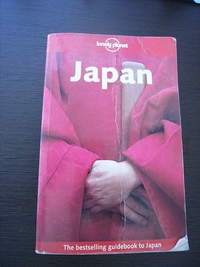2009年08月16日
『十八夜祭』:英語で案内
有田町(西有田町)大木の 『龍泉寺』で毎年八月十八日に行われる『十八夜祭り』を紹介します。
まさにこれこそ日本の故郷の夏祭り!実に趣のあるお祭りです。浴衣姿の人達が団扇片手にお寺の境内に集まり、浮立に花火・夜店、夏祭りを思い思いに楽しんでられます。(実はこの日は偶然にもワタシの誕生日でもあります。)
The festival on the 18th is held in the evening at Ryusenze Temple and in nearby Nishi-Arita. (Actually, this festival falls on my birthday! I’ve never experienced such a memorable birthday party!) The August 18th festival still follows traditions in terms of its performances and music. Furyu dances and fireworks displays are symbolic forms of prayer for rain and a rich harvest in the present year.
まず、宵の頃、古い家並が残る大木の通りをゆく道行。花火と不思議な伝統音楽と浮立の踊りの行列です。

The procession of Happi (a kind of Kimono) clad people dancing and playing music with flutes, drums and bells, and accompanied by fireworks, creates a mysterious atmosphere along the narrow streets lined with old houses.
そして夜になると出店の並ぶお寺の境内で、若者たちがぶつかり合う儀式がはじまり、道行の行列隊がにぎやかに太鼓と鉦笛の音色を夜空に鳴り響かせながら入場し、浮立踊りがにぎやかに行われます。
Performance; at the opening ceremony of the temple, oddly some youngsters were clashing with each other. According to the local residents, one side was representing the evil spirits who were trying to stop the rituals of the opening ceremony, while the other side was countering them to protect the performers in order that they may continue the rituals of the opening ceremony.
クライマックスは境内に建てられた巨大なジャーモンという仕掛け花火がぐるぐる回り、境内の真上に打ち上げられる花火がお堂とてもいい具合にマッチするのです。
Fireworks; At the climax, “Jamon”, a dragon-like figure, sparks and starts revolving. Behind the sparking Jamon, big rocks start exploding one after another in the sky. It’s an amazing spectacle!
この祭りの歴史的由来は雨乞いの儀式から始まったそうです。むかしは、干ばつが定期的この地域を襲っていたそうです。地元の人によると、この祭りのあと必ず雨が降るそうです。たしかにその翌日から雨の日が続きました。
The Historical Background; According to the historical information about Nishi-Arita provided by the Nishi-Arita town office, a severe drought struck the Arita area in 1532. Ei-tetus, a Buddhist priest, was ordered to pray for rain by a lord who dominated this area. It eventually rained after he had prayed for three days.The lord built Ryusenzi in commemoration of this good fortune. When another drought occurred in Arita in 1658, Sonei, the chief of Ryusenzi, spent 17 days praying for rain by worshiping “the king of dragons” who was believed to manage rain. Also, almost all of the village people performed Furyu dances as a means to pray for rain. Finally, they enjoyed substantial rainfall and even a rich harvest that year.In fact , the local people told me that it has never failed to rain after this festival. The day after the festival, it rained a little indeed. It sounds a little funny, but if it rains heavily, the festival is called off. I think that’s because prayers for rain are no longer necessary.
花火が済んで境内の後して、連れの知人宅に呼ばれました。祭りの期間はこの地域では家を開けて、お客さんをもてなすそうです。そのお宅は浮立で使う笛つくりの達人いらしたそうです。
A local family welcomed us to their house and offered us treats and drinks. They taught us about the background of the festivals and Furyu. In the picture below, flutes for Furyu are featured. The deceased head of the family who was a master flute-player made these flutes. During the days of the festival, visitors are supposed to be welcomed to residents’ houses and wined and dined for free. This custom is called “Bureiko” in Japanese.

今から佐賀・長崎は浮立の季節になりますね。以前は浮立を見るのが好きであちこち見て回ったりもしました。コレカラちょこちょこ英文で案内していこうかと思います。
まさにこれこそ日本の故郷の夏祭り!実に趣のあるお祭りです。浴衣姿の人達が団扇片手にお寺の境内に集まり、浮立に花火・夜店、夏祭りを思い思いに楽しんでられます。(実はこの日は偶然にもワタシの誕生日でもあります。)
The festival on the 18th is held in the evening at Ryusenze Temple and in nearby Nishi-Arita. (Actually, this festival falls on my birthday! I’ve never experienced such a memorable birthday party!) The August 18th festival still follows traditions in terms of its performances and music. Furyu dances and fireworks displays are symbolic forms of prayer for rain and a rich harvest in the present year.
まず、宵の頃、古い家並が残る大木の通りをゆく道行。花火と不思議な伝統音楽と浮立の踊りの行列です。
The procession of Happi (a kind of Kimono) clad people dancing and playing music with flutes, drums and bells, and accompanied by fireworks, creates a mysterious atmosphere along the narrow streets lined with old houses.
そして夜になると出店の並ぶお寺の境内で、若者たちがぶつかり合う儀式がはじまり、道行の行列隊がにぎやかに太鼓と鉦笛の音色を夜空に鳴り響かせながら入場し、浮立踊りがにぎやかに行われます。
Performance; at the opening ceremony of the temple, oddly some youngsters were clashing with each other. According to the local residents, one side was representing the evil spirits who were trying to stop the rituals of the opening ceremony, while the other side was countering them to protect the performers in order that they may continue the rituals of the opening ceremony.
クライマックスは境内に建てられた巨大なジャーモンという仕掛け花火がぐるぐる回り、境内の真上に打ち上げられる花火がお堂とてもいい具合にマッチするのです。
Fireworks; At the climax, “Jamon”, a dragon-like figure, sparks and starts revolving. Behind the sparking Jamon, big rocks start exploding one after another in the sky. It’s an amazing spectacle!
この祭りの歴史的由来は雨乞いの儀式から始まったそうです。むかしは、干ばつが定期的この地域を襲っていたそうです。地元の人によると、この祭りのあと必ず雨が降るそうです。たしかにその翌日から雨の日が続きました。
The Historical Background; According to the historical information about Nishi-Arita provided by the Nishi-Arita town office, a severe drought struck the Arita area in 1532. Ei-tetus, a Buddhist priest, was ordered to pray for rain by a lord who dominated this area. It eventually rained after he had prayed for three days.The lord built Ryusenzi in commemoration of this good fortune. When another drought occurred in Arita in 1658, Sonei, the chief of Ryusenzi, spent 17 days praying for rain by worshiping “the king of dragons” who was believed to manage rain. Also, almost all of the village people performed Furyu dances as a means to pray for rain. Finally, they enjoyed substantial rainfall and even a rich harvest that year.In fact , the local people told me that it has never failed to rain after this festival. The day after the festival, it rained a little indeed. It sounds a little funny, but if it rains heavily, the festival is called off. I think that’s because prayers for rain are no longer necessary.
花火が済んで境内の後して、連れの知人宅に呼ばれました。祭りの期間はこの地域では家を開けて、お客さんをもてなすそうです。そのお宅は浮立で使う笛つくりの達人いらしたそうです。
A local family welcomed us to their house and offered us treats and drinks. They taught us about the background of the festivals and Furyu. In the picture below, flutes for Furyu are featured. The deceased head of the family who was a master flute-player made these flutes. During the days of the festival, visitors are supposed to be welcomed to residents’ houses and wined and dined for free. This custom is called “Bureiko” in Japanese.
今から佐賀・長崎は浮立の季節になりますね。以前は浮立を見るのが好きであちこち見て回ったりもしました。コレカラちょこちょこ英文で案内していこうかと思います。
「SHOGUN:将軍」と平戸と世界史
英語で長崎と天草地方の潜伏キリシタン関連遺産案内(序)
英語で唐津くんち
英語でトンテントン
相知の鵜殿(うど)の石仏群:英語でパワースポット
Lonely Planet Japan
英語で長崎と天草地方の潜伏キリシタン関連遺産案内(序)
英語で唐津くんち
英語でトンテントン
相知の鵜殿(うど)の石仏群:英語でパワースポット
Lonely Planet Japan










